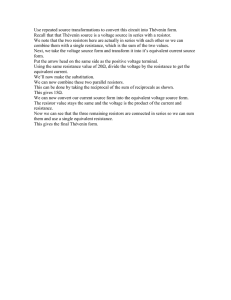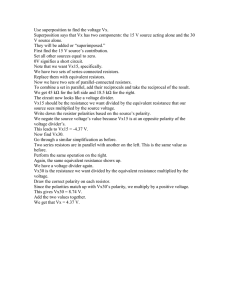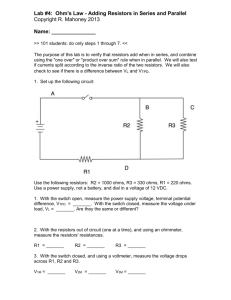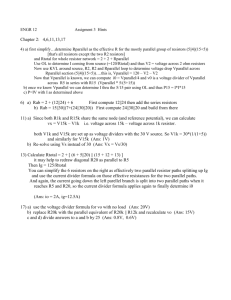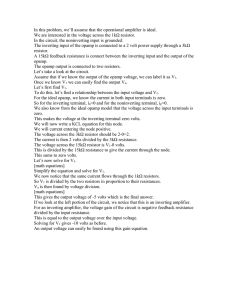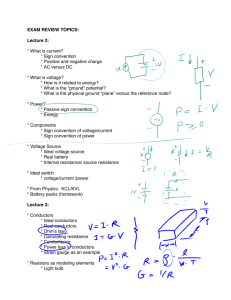2240 HOMEWORK #3 prob 2 solution EX: a) Use the current
advertisement
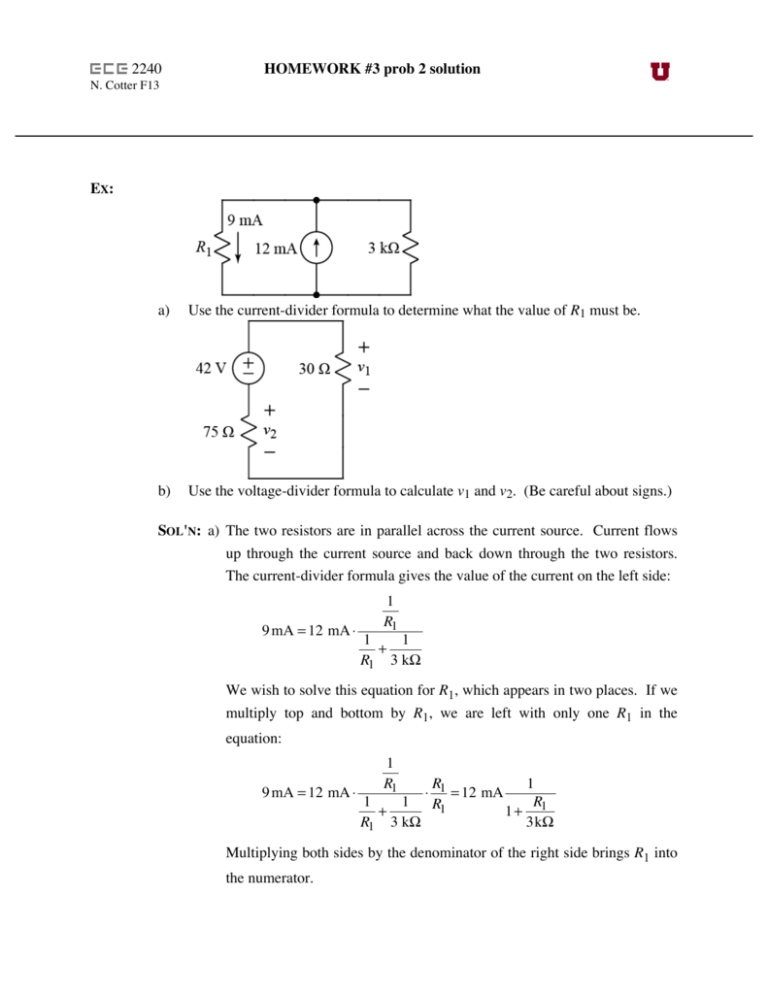
2240 HOMEWORK #3 prob 2 solution N. Cotter F13 EX: a) Use the current-divider formula to determine what the value of R1 must be. b) Use the voltage-divider formula to calculate v1 and v2. (Be careful about signs.) SOL'N: a) The two resistors are in parallel across the current source. Current flows up through the current source and back down through the two resistors. The current-divider formula gives the value of the current on the left side: 9 mA = 12 mA ⋅ 1 R1 1 1 + R1 3 kΩ We wish to solve this equation for R1, which appears in two places. If we multiply top and bottom by R1, we are left with only one R1 in the equation: 9 mA = 12 mA ⋅ 1 R1 R 1 ⋅ 1 = 12 mA 1 1 R R1 + 1+ 1 R1 3 kΩ 3kΩ Multiplying both sides by the denominator of the right side brings R1 into the numerator. ⎛ R ⎞ 9 mA ⋅ ⎜ 1 + 1 ⎟ = 12 mA ⎝ 3kΩ ⎠ The remaining steps are straightforward. 9 mA + 9 mA R1 = 12 mA 3kΩ or 9 mA + NOTE: 9 mA 12 mA − 9 mA 3mA R1 = = = 1kΩ 9 mA 3kΩ 3 µ A/Ω 3kΩ The ratio of the resistances in a current divider is the inverse of the ratio of the currents. b) This is a standard voltage divider configuration for v1: v1 = 42 V ⋅ 30 Ω = 12 V 30 Ω + 75 Ω For v2, we must reverse the sign of the answer. v2 = −42 V ⋅ NOTE: 75 Ω = −30 V 30 Ω + 75 Ω To determine whether the sign of the answer must be reversed, trace a path from the + sign of the measurement back to the source. (Go in the direction away from the resistor and the – sign of the resistor's voltage drop.) If the path leads to the + sign of the voltage source, then all is well. If the path leads to the – side of the voltage source, then use a minus sign in your answer. Of course, "voltage source" may be any total voltage drop across series resistors. It need not be a voltage source.
